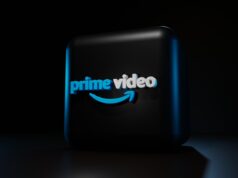 [Editor’s Note: This is a guest column by Marty Shindler. Shindler is an expert in film & TV production, studio operations, visual effects, post production, video game development and database software and resides in Los Angeles, CA.]
[Editor’s Note: This is a guest column by Marty Shindler. Shindler is an expert in film & TV production, studio operations, visual effects, post production, video game development and database software and resides in Los Angeles, CA.]
CES 2013 was at once exhilarating, intriguing and overwhelming, in a positive way. Walking through the 1.92 million feet of exhibition space with nearly 160,000 of your closest friends is an adventure unto itself.
Most years, in a newsletter following our visit to CES, we have included some of our observations. Readers have told us that they would like to hear more about our view of the conference, so we decided to devote a newsletter to our perspective on CES this year.
It is impossible to see the whole show. Walk down one aisle and look left and you might miss the exhibit on the right. That said, we set our exhibit hall priorities and will provide our perspective on what we saw and our impressions for now and for the future.
Remote presence – We gave our 2013 Shindler Most Futuristic Product Award to Suitable Technologies. We sought out their booth in part due to a recent article in the LA Times about the product and we were not disappointed. In the world of telecommuting and a global workforce, the concept of remote presence or take a robot to work may be realized in time through products such as this. See a picture on our recent Twitter post on this. The many uses for this technology will begin to appear and will increase as the product cost decreases.
Absence of Microsoft and Apple – Microsoft announced prior to CES 2012 that it was to be the company’s last year exhibiting at the show. Apple has never exhibited at CES. As we walked through the exhibit halls, Microsoft’s presence was evident in the many computers, tablets and phones from numerous manufacturers. Apple’s presence was noted in some apps, but more so in the numerous accessory manufacturers at CES selling the latest in iPhone, iPad and iPod cases as well as in their proprietary connection cables.
Apple’s market share is presently declining, with Samsung now the leading manufacturer of smartphones and all phones. While it would be foolhardy to count a formidable contender such as Apple out, they might be wise to reconsider their position on exhibiting at CES. We do not think they will, but they should.
TV – The major TV manufacturers were at center stage with OLED, LCD and even Plasma displays. Sharp showed its 8K, 85 inch TV once again and nearly all of the other exhibiting companies had Ultra HD, the new official name of 4K TVs. They came in all sizes, with at least three companies, Samsung, Sony and Hisense having 110 inch displays.
While there is not much 4K native content currently, the ability to up res 2K content to 4K on the fly will help to position the sets far better than what 3D faced in its early years and continues to face today with the dearth of 3D content.
TVs had features such as bendable displays, curved displays, voice and gesture control, built in apps and browsers, improved sound systems, etc., with each company putting its particular spin on them. Built in browsers are going to be a game changer as those sets penetrate the marketplace.
Perhaps the most unique and innovative product was the Hisense transparent 3D TV. Click for a picture and my recent Twitter post on this.
Also unique, but we not convinced of its practicality, is 3D multiview TVs from Sony and Haier. The displays, requiring active glasses, enable two concurrent programs to be viewed, each in 3D, with the viewer selecting the desired program via a button on the glasses.
As we wrote in Futuring High Framerates in September 2012, the growth of Ultra HD and the concurrent increase in size of the displays, it is just a matter of time before a 40, 50 or 100 foot display is installed in a movie theater. Theaters need to keep pace with what is available in the home if people are to be incentivized to leave the comfort of their home and go to the cinema.
If we had any doubt before about the foregoing, (we did not), it was all dispelled this past week when #4 in size ranked TCL bought naming rights for the Grauman’s Chinese Theater in Hollywood. We will be keeping a watchful eye on this.
Finally, one cannot tour the CES booths of the various manufacturers without differentiating them in some fashion. From our point of view, and we suspect numerous others, the Korean manufacturers, Samsung and LG were the most impressive, followed by those from Japan. Chinese manufacturers Haier, Hisense and TCL, are rapidly becoming very competitive. All had a broad range of other products as well, including phones, tablets, computers, etc.
Autostereo – Autostereo displays improved this year over last, and we strongly suspect they will be even better next year. Certainly 3D did not receive all of the hype at the show that it received in prior years, but with the continued development of autostereo, there may yet be more market penetration as the base of content grows. Sony’s and UltraD’s devices looked particularly good. Toshiba continues its development of autostereo and its eye tracker camera built in is a potential differentiator.
Powering devices – Powering our devices, especially when we are on the go and not always near an electrical outlet is a challenge. Many companies had back up battery packs, solar powered devices, accessories to power up in an automobile, etc. Qi, from the Wireless Power Consortium, a group that boasts an impressive list of supporting and implementing companies, has a lot of promise as well.
The bottom line, as the folks from Qi told us, “charge snacking,” the process of partially recharging devices as and when power is available, rather than fully charging, is the future of recharging. As their technology becomes more widespread, people will become accustomed to charge snacking.
Smart homes and the internet of things – Empowered by growing number of internet connected devices, sensors, etc., the holy grail of the smart home is upon us. As reported in Venture Beat on December 21, 2012, ABI Research forecasts that more than 5 billion wireless chips will be shipped in 2013, with many of them going into cameras, refrigerators and even lightbulbs. This technology will become pervasive and have an impact on security, medical/health monitoring and, of course, on communications.
Second screens – The number of companies showing tablets was significant. The MESA 2nd Screen Summit where I moderated a panel, preceded the exhibit hall opening, but it foreshadowed a lot of what we saw the next day on the floor.
Synchronizing the TV and tablets through ACR or audio watermarking, whether over live viewing, download/streaming or on DVR, and the expected growth in apps related to those shows will be a significant factor in the next few years as content producers continue to experiment with what works and does not work for viewers as their ability to target the audience begins to reap rewards.
Our take on CES is way beyond the space that is available here. Over the next couple of weeks, various thoughts about the show will be posted on Facebook, Twitter, LinkedIn and Google +. Be sure to connect with me on one or more of those social networking sites if we are not already connected.
Photo by Flickr user nodomain1, used under Creative Commons license.








